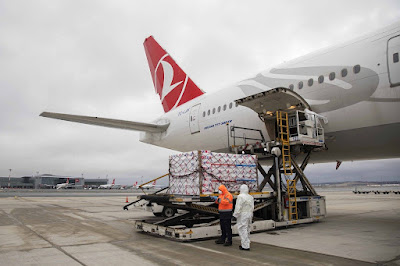Streamlining Supply Chains: Procurement Strategies for Efficient Freight Management
In the fast-paced world of global commerce, the efficiency of supply chains can make all the difference between success and stagnation. At the heart of this efficiency lies the strategic integration of procurement practices with freight management – a symbiotic relationship that optimizes logistics, reduces costs, and enhances overall performance. In this blog post, we delve into the realm of supply chain streamlining, exploring the key procurement strategies that drive efficient freight management.
Understanding the Intersection
Before delving into specific strategies, it's essential to grasp the critical intersection between procurement and freight management. Procurement involves the sourcing and acquisition of goods and services, while freight management focuses on the transportation of these goods from point A to point B. By aligning these two functions seamlessly, organizations can achieve a harmonious flow of materials and products throughout the supply chain.
Strategies for Success
Supplier Relationship Management (SRM): Establishing strong relationships with suppliers is paramount to procurement success. By fostering collaborative partnerships based on trust and transparency, organizations can negotiate favorable terms, secure competitive pricing, and gain access to value-added services such as expedited shipping and flexible delivery schedules.
Strategic Sourcing: Strategic sourcing involves identifying the most cost-effective suppliers and procurement channels for specific goods and services. By conducting thorough market analyses, evaluating supplier capabilities, and leveraging economies of scale, organizations can optimize their procurement processes and minimize transportation costs associated with freight management.
Consolidation and Optimization: Consolidating shipments and optimizing freight routes are effective strategies for reducing transportation costs and improving efficiency. By leveraging advanced logistics technologies and data analytics, organizations can identify opportunities for consolidating shipments, minimizing empty space in freight containers, and optimizing delivery schedules to maximize resource utilization and minimize transit times.
Performance Monitoring and Continuous Improvement: Continuous monitoring of procurement and freight management performance is essential for identifying areas of inefficiency and implementing corrective actions. By establishing key performance indicators (KPIs) and leveraging data analytics tools, organizations can track metrics such as on-time delivery rates, transportation costs, and supplier performance to drive continuous improvement initiatives and enhance supply chain efficiency.
The Role of Technology
In today's digital age, technology plays a pivotal role in streamlining supply chains and enhancing procurement-freight management integration. Advanced supply chain management systems, transportation management systems (TMS), and procurement platforms empower organizations to automate processes, optimize workflows, and gain real-time visibility into their supply chain operations. Additionally, emerging technologies such as blockchain and artificial intelligence offer innovative solutions for enhancing traceability, transparency, and efficiency across the entire supply chain ecosystem.
Conclusion
In an era defined by globalization, digitalization, and evolving consumer demands, the seamless integration of procurement strategies with freight management is critical for driving supply chain efficiency and maintaining a competitive edge. By embracing collaborative partnerships, strategic sourcing practices, and innovative technologies, organizations can streamline their supply chains, reduce costs, and deliver value to customers with unparalleled speed and efficiency. As the landscape of global commerce continues to evolve, the strategic alignment of procurement and freight management will remain a cornerstone of supply chain success.




Comments
Post a Comment